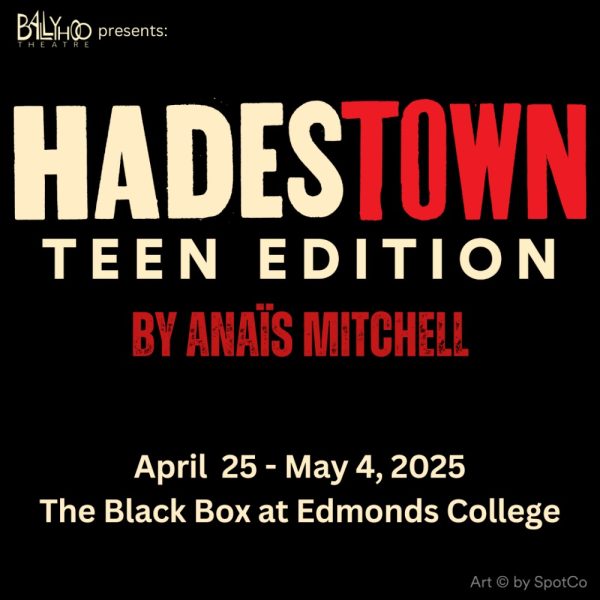How you feel affects what you wear & vice versa
Entering the Edmonds Community College campus is like going to an extremely casual funeral. Gone are the days when we spent our hours learning in brightly colored classrooms, we now spend our time in cream-colored walls with little to no color whatsoever. A side effect of this is that we too have lost our color.
“The worst thing would be to have a blank wall,” said psychology professor Mark Seely. “In terms of brain development, your brain is still wiring up until about 25 years of age, early on, the more exposure to different things you get, the better.”
While EdCC reports that the average age of a student here is 29, the majority of students are in their teens and early 20s, meaning that their brains are still developing.
Even though offering a more creative environment would not be as beneficial for older students and faculty, it could be for the majority of students. Many degrees programs require, or at least recommend, art classes because creativity is essential for students.
Some students do not have the opportunity to take art classes here, so often their attire might be their only creative outlet. However, students do not appear to be using their clothing in this way- they opt for more casual and darker colored looks.
In an informal survey, only 47 percent of students said that black was one of their favorite colors. Despite this, 86 percent of students reported that black was one of the colors they wore most frequently, with gray and white also being very popular, although a lot less than black. Actual colors seem to be very rarely worn, except for blue, which is worn frequently by 53 percent of students.
This could potentially be attributed to the popularity of denim, as well as it being a standard color for sports teams and schools, including our own.
So why aren’t students expressing themselves with their outfit choices? Some students said that they preferred a minimalist look, or that the brands that they are loyal too do not offer a more extensive variety of color choices. However, far more people just do not put effort into what they wear, with 81 percent of students describing their go-to outfit as “casual.”
While wearing something that’s comfortable and takes little time to put together isn’t necessarily bad, our reasons for wanting to might be. Students tended to cite sadness, depression, tiredness, and overall bad moods as their reasons for not planning their outfits. Everyone has bad days, but the amount of bad days our students are having is concerning.
“It’s darker more apparently here,” said Seely on seasonal depressive disorder. “I’ve noticed myself winters are kind of…depressing, in a way that they weren’t when I was living in the middle of the country. That’s probably the biggest factor, just the number of hours that it’s light outside.”
Seasonal Affective Disorder (SAD) is a mood disorder characterized by depressive moods that occur at the same time every year. It is less common in warmer areas, and much more common in the Pacific Northwest.
The University of Washington estimates that as many as 20 to 30 percent of people living at a similar latitude suffer from SAD, and they now offer light therapy to their students to relieve symptoms of the conditions.
Many students could be suffering from this condition, and they might not even know it. Respondents have stated that the preferences for the colors they wear change from season to season, or that they opt for darker shades when it is dark and rainy, which is very frequent here.
Simply wearing bright colors is not going to cure depression by any means, but the students who do wear them appear to receive some benefits from doing so.
Many respondents stated that what they wore made them feel more confident; this was especially true for people who listed a favorite color other than black. They described getting a confidence boost from putting more effort into their appearance and wearing clothes that they enjoy, rather than what is easy.
79 percent of students had positive feelings when wearing colors that were their favorite; however, 57 percent of students said that they feel “neutral” when wearing the colors they most frequently. While many respondents did describe how a relationship between their mood and their clothing, there were also some that did not see a link, or at the very least haven’t ever considered it. This is probably true for a lot of people, but color is actually very important for humans biologically, and not just when we’re developing.
“I don’t think, as a species, we can survive without [colors]. Color doesn’t exist in the world, it’s something our brain does,” said Seely. “People don’t realize that they look around and the world is full of colors. No, the world just has light and the light reflects in different wavelengths, and we’ve evolved to perceive these wavelengths as categorically distinct colors, despite the fact that they don’t exist in the world.”
Colors play an important role from an evolutionary standpoint, and they have an impact on our mental health and overall development.
If you’re not feeling great, take the time to put an outfit together that you enjoy anyways. Start branching out with what you wear, try out colors for once. Dress for how you want to feel, maybe you’ll be surprised.





